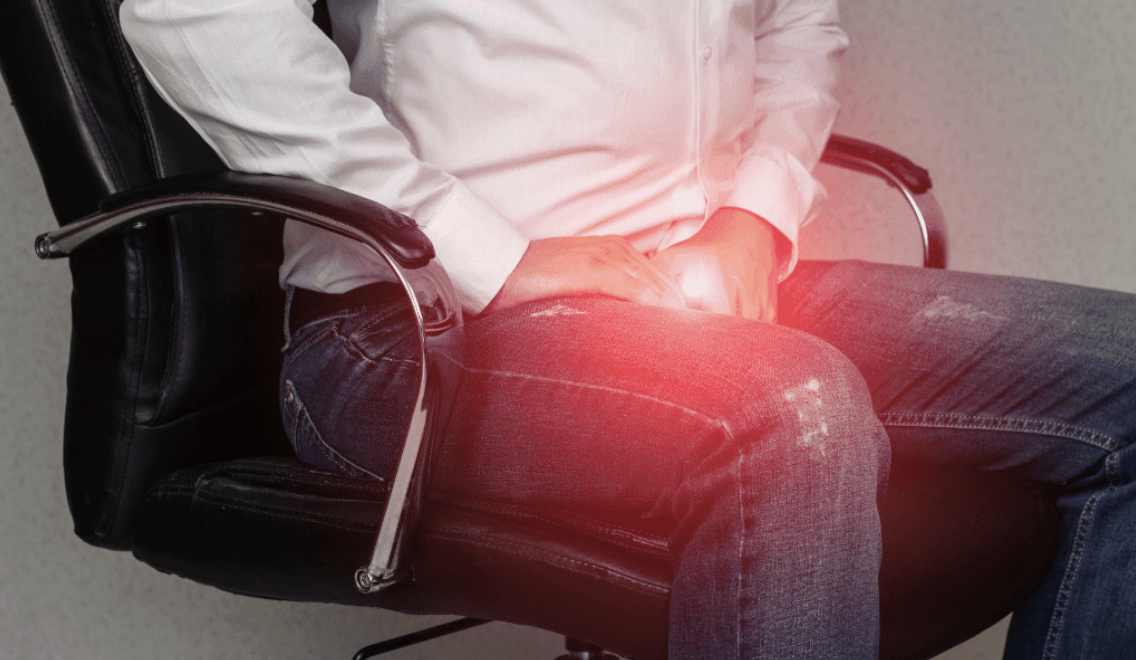Squatting is a popular exercise that can provide numerous benefits, such as improving strength, building muscle, and enhancing mobility. However, knee pain is a common issue that can occur when performing squats, which can be a frustrating and limiting experience. Knee pain during squatting can be caused by several factors related to the anatomy of the knee joint, poor technique, or underlying knee conditions.
Understanding these factors is crucial to finding the appropriate strategies to prevent and manage knee pain during squatting. Whether you are a fitness enthusiast, an athlete, or someone new to squatting, knowing the causes of knee pain and the steps you can take to avoid or manage it is essential.
At Bioregeneration Integrated Medical Centre, we specialize in regenerative medicine and offer treatments such as PRP therapy to help patients with orthopedic conditions such as knee problems and pain.
We’ll explore why a person might experience knee pain from squatting, provide tips on how to stop knees from hurting when squatting, and offer advice on when to seek medical attention.
What are some of the reasons for experiencing knee pain when squatting?
Knee pain during squatting can be a frustrating experience for anyone, especially fitness enthusiasts. However, understanding the various factors that may cause knee pain during squatting can help prevent and manage the pain.
The anatomy of the knee joint is complex and involves several structures that can be affected during squatting, causing knee pain. The patella, or kneecap, is one of the structures that can be affected during squatting. When the patella is not aligned with the femur or thigh bone, it can cause pain and discomfort during squatting. The ligaments, which are bands of tissue that connect bones, can also be affected during squatting. Ligament sprains, when the ligaments are stretched beyond their normal range, can cause pain and swelling in the knee joint.
Patellofemoral pain syndrome is a common knee condition that affects the kneecap and surrounding structures, causing pain during knee-bending activities, such as squatting. The pain is typically felt in the front of the knee and can be worsened by activities that place pressure on the knee joint.
Meniscal tears are more severe knee injuries that can cause pain during squatting and require medical attention. Meniscal tears occur when a sudden twisting motion occurs in the knee joint, causing pain, swelling, and stiffness.
Poor technique or biomechanics can contribute to knee pain during squatting. For example, excessive forward knee movement is a common technique error that can put undue stress on the knee joint and cause pain. When the knee moves forward beyond the toes during squatting, it can cause increased stress on the knee joint, leading to pain and discomfort.
Incorrect foot positioning can also affect the alignment of the knee joint and cause pain during squatting. When the feet are too close together or too far apart, the knee joint can be put under excessive stress, causing pain and discomfort.
Other possible causes include:
Injury or trauma to the knee: This may cause localized pain and swelling in the knee.
Iliotibial band (IT-band) syndrome: This condition may cause pain in your hip, upper thigh, and knee.
Osteoarthritis: Symptoms can include knee weakness, swelling, snapping or popping noises as you move your knee, and increased pain in the morning
Patellar tendonitis: This condition causes pain at the base of the kneecap and may lead to swelling or a burning sensation.
Bacterial joint inflammation: This condition can also lead to swelling, redness, and a warm feeling around the joint, as well as fatigue and loss of appetite.
How do I stop my knees from hurting when I squat?
Proper warm-up and stretching are crucial to preventing knee pain during squatting. Warming up improves blood flow to the muscles and prepares them for physical activity, reducing the risk of injury.
Stretching also helps to improve joint flexibility and mobility, reducing the risk of knee pain during squatting. Dynamic stretching exercises such as leg swings, lunges, and knee circles can help to prepare the body for squatting. It is vital to take the time to properly warm up and stretch before squatting to prevent knee pain.
Improving the squatting technique and correcting biomechanical errors can also help to prevent knee pain. Maintaining an upright posture, keeping the knees aligned with the feet, and avoiding excessive forward knee movement are all essential techniques to prevent knee pain during squatting. It is important to have proper form and technique while squatting, as this can help avoid injury and reduce the risk of knee pain. A qualified trainer or physical therapist can guide how to improve squatting techniques and correct biomechanical errors.
Exercises that strengthen the knee joint muscles can also help prevent knee pain during squatting. The quadriceps, hamstrings and gluteal muscles are crucial for maintaining knee joint stability during squatting. Strengthening exercises should be done with caution and under the guidance of a trainer or physical therapist, especially if there is an underlying knee condition.
Modifications to the squatting movement can also alleviate knee pain. Using a box or bench for support can help reduce the knee joint’s stress, allowing for a more controlled movement. Adjusting foot positioning can also help improve the knee joint’s alignment and reduce knee pain. If knee pain persists, reducing the intensity of the squatting movement can also help to alleviate pain.
Paying attention to the body’s signals and seeking medical advice if knee pain persists despite self-care strategies is important. With the right strategies and guidance, knee pain can be managed, and squatting can continue to be a beneficial exercise for overall health and fitness.
Should I avoid squats with knee pain?
Avoiding squats altogether due to knee pain in certain situations may be appropriate. If a person has an acute knee injury such as a ligament tear, meniscal tear, or patella dislocation, they should avoid squatting until the injury has healed.
Severe pain, inflammation, and limited range of motion may also indicate that squatting should be avoided until the underlying condition is properly addressed. In these cases, rest, ice, compression, and elevation (RICE) can help to manage the pain and inflammation until the injury heals.
If knee pain persists despite self-care strategies, seeking medical attention is important to prevent further injury and manage the pain. Signs that knee pain may require medical attention include persistent pain, swelling, stiffness, and limited range of motion.
It is important to get medical attention if other symptoms, such as fever, redness, or warmth around the knee joint, accompany the knee pain. A qualified healthcare provider can perform a physical examination, imaging tests, and other diagnostic tests to identify the underlying cause of knee pain. The healthcare provider can develop a treatment plan based on the diagnosis, including medications, physical therapy, or surgery.
Orthopedic Pain Management Treatments Available in Kingston, Jamaica
With the aim of promoting tissue healing and reducing pain and inflammation, the Bioregeneration Integrated Medical Team is experienced and highly qualified to treat pain conditions using treatments such as
PRP injections have been used for various orthopedic conditions, including knee pain.
We are confident that we can help you live a pain-free life by finding the best treatment for you.



